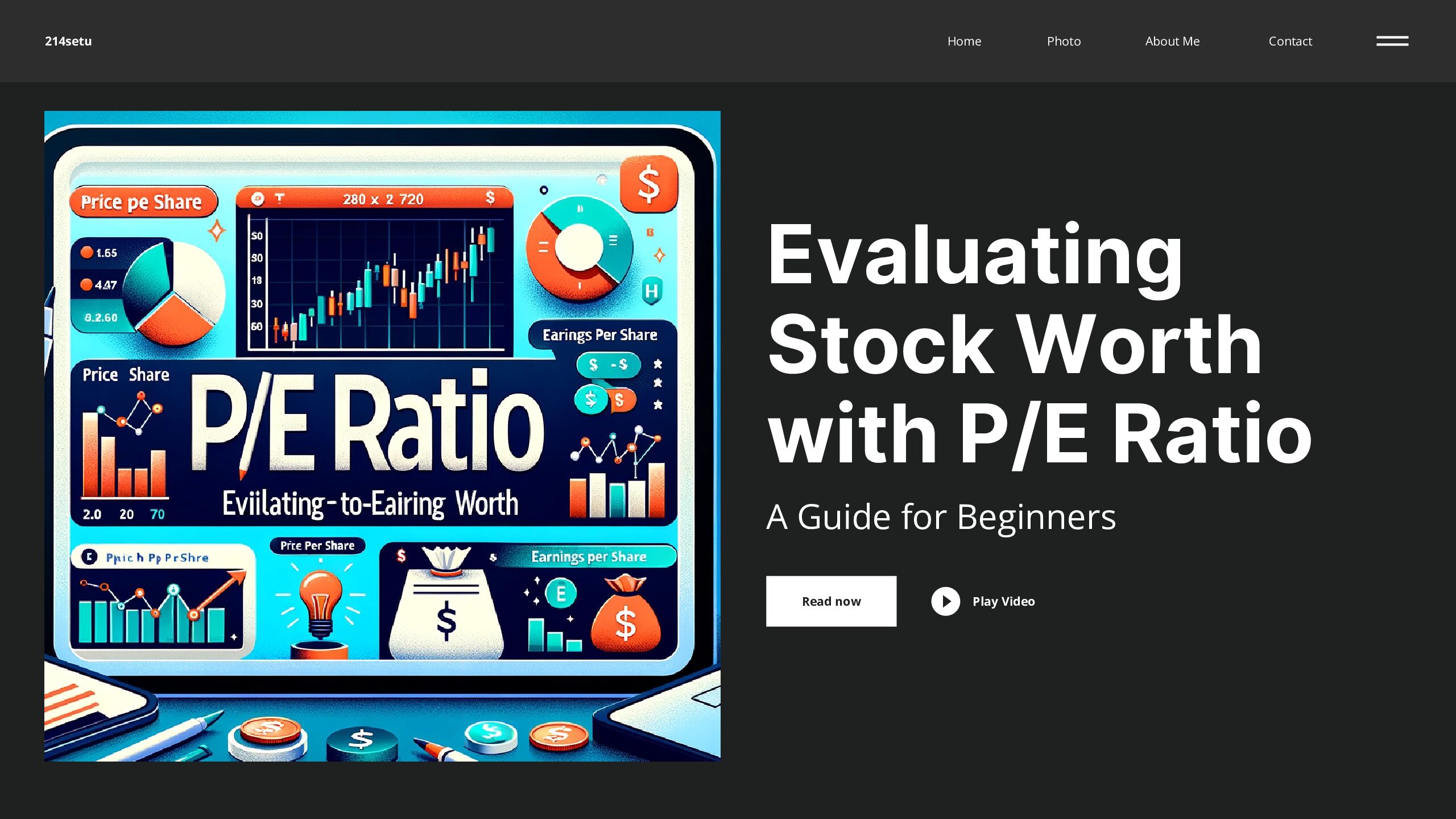
Investing in stocks can seem a bit overwhelming at first, right? But don’t worry, we’ve all been there. One of the key tools you can use to evaluate whether a stock is a good buy is the Price-to-Earnings (P/E) ratio. In this guide, we’ll break down what the P/E ratio is, why it matters, and how you can use it to make smart investment decisions.
What is the P/E Ratio?
Let’s start with the basics. The P/E ratio stands for Price-to-Earnings ratio. It’s a simple formula:
P/E Ratio = Price per Share / Earnings per Share (EPS)
- Price per Share: This is how much one share of the stock costs.
- Earnings per Share (EPS): This is the company’s profit divided by the number of shares outstanding.
For example, if a company’s stock is priced at $50 and its EPS is $5, the P/E ratio would be:
P/E Ratio = $50 / $5 = 10
Why the P/E Ratio Matters
The P/E ratio is like a snapshot of what investors are willing to pay for each dollar of a company’s earnings. A higher P/E ratio can mean that investors expect higher growth in the future, while a lower P/E might indicate that the stock is undervalued or the company is facing challenges.
Types of P/E Ratios
There are two main types of P/E ratios:
- Trailing P/E: This is based on the past 12 months of earnings. It gives you an idea of how the company has performed recently.
- Forward P/E: This is based on projected earnings for the next 12 months. It helps you understand what investors expect in the future.
How to Calculate the P/E Ratio
Calculating the P/E ratio is pretty straightforward. Let’s look at a couple of examples:
Company A has a stock price of $100 and an EPS of $10: P/E Ratio = $100 / $10 = 10
Company B has a stock price of ₹500 (Indian Rupees) and an EPS of ₹25: P/E Ratio = ₹500 / ₹25 = 20
Interpreting the P/E Ratio
So, what do these numbers mean? Here’s a quick guide:
- High P/E Ratio: Indicates high investor expectations. The company is expected to grow quickly.
- Low P/E Ratio: May indicate that the stock is undervalued or that the company is facing difficulties.
- Average P/E Ratio: It’s helpful to compare the P/E ratio to other companies in the same industry to get a better sense of what’s typical.
Using the P/E Ratio for Investment Decisions
The P/E ratio can help you decide if a stock is worth buying. Here’s how:
- Identify Undervalued Stocks: A low P/E ratio compared to the industry average might indicate a good buying opportunity.
- Spot Overvalued Stocks: A very high P/E ratio might suggest that a stock is overpriced and could be risky.
Limitations of the P/E Ratio
Remember, the P/E ratio is just one tool in your investment toolbox. It has some limitations:
- Doesn’t Consider Growth Rates: A high P/E ratio might be justified for a rapidly growing company.
- Industry Variations: Different industries have different average P/E ratios.
Real-World Examples
Let’s look at some real-world examples:
- Tech Company X has a P/E ratio of 30, reflecting high growth expectations due to new product launches.
- Retail Company Y has a P/E ratio of 15, which is average for its industry, indicating stable but slower growth.
Conclusion
The P/E ratio is a great starting point for evaluating stocks. It gives you a quick snapshot of how a company is valued compared to its earnings. But remember, it’s best used alongside other metrics and research. So next time you’re looking at a stock, check out its P/E ratio and see what it tells you about the company’s potential.

